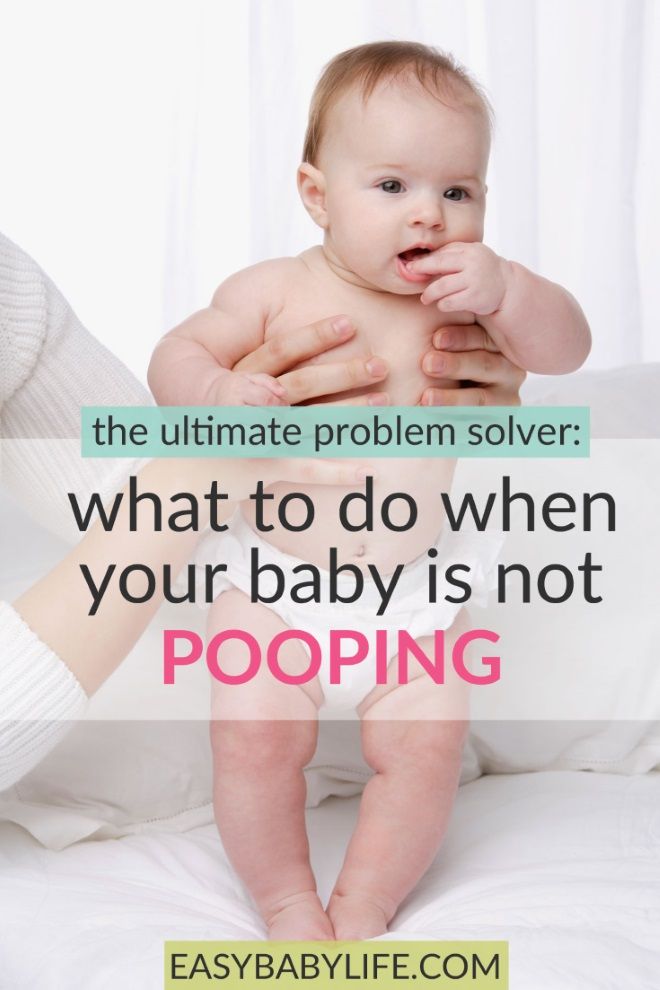How much formula for a newborn baby per feeding
Amount and Schedule of Baby Formula Feedings
- In the first week after birth, babies should be eating no more than about 1 to 2 ounces (30 to 60 ml) per feed.
- During the first month, babies gradually eat more until they take 3 to 4 ounces (90 to 120 ml) per feed, amounting to 32 ounces per day. Formula-fed babies typically feed on a more regular schedule, such as every 3 or 4 hours. Breastfed babies usually take smaller, more frequent feedings than formula-fed infants.
If your baby sleeps longer than 4 to 5 hours during the first few weeks after birth and starts missing feedings, wake them up and offer a bottle.
By the end of the first month: Your baby will be up to at least 3 to 4 ounces (120 mL) per feeding, with a fairly predictable schedule of feedings about every 3 to 4 hours.
By 6 months: Your baby will consume 6 to 8 ounces (180–240 mL) at each of 4 or 5 feedings in 24 hours.
Formula feeding based on body weight
On average, your baby should take in about 2½ ounces (75 mL) of infant formula a day for every pound (453 g) of body weight. But they probably will regulate their intake from day to day to meet their own specific needs, so let them tell you when they've had enough. If they become fidgety or easily distracted during a feeding, they're probably finished. If they drain the bottle and continues smacking their lips, they might still be hungry.
There are high and low limits, however. If your baby consistently seems to want more or less than this, discuss it with your pediatrician. Your baby should usually drink no more than an average of about 32 ounces (960 mL) of formula in 24 hours. Some babies have higher needs for sucking and may just want to suck on a pacifier after feeding.
On-demand feeding
Initially it is best to feed your formula-fed newborn a bottle on demand, or whenever they cry with hunger.![]() As time passes, your baby will begin to develop a fairly regular timetable of their own. As you become familiar with their signals and needs, you'll be able to schedule their feedings around their routine.
As time passes, your baby will begin to develop a fairly regular timetable of their own. As you become familiar with their signals and needs, you'll be able to schedule their feedings around their routine.
Eating & sleeping patterns
Between 2 and 4 months of age (or when the baby weighs more than 12 lb. [5.4 kg]), most formula-fed babies no longer need a middle-of-the-night feedings. They're consuming more during the day, and their sleeping patterns have become more regular (although this varies considerably from baby to baby). Their stomach capacity has increased, too, which means they may go longer between daytime feedings—occasionally up to 4 or 5 hours at a time.
If your baby still seems to feed very frequently or consume larger amounts, try distracting them with play or with a pacifier. Sometimes patterns of obesity begin during infancy, so it is important not to overfeed your baby.
Getting to know your baby's feeding needs
The most important thing to remember, whether you breastfeed or bottlefeed, is that your baby's feeding needs are unique. No book―or website―can tell you precisely how much or how often they need to be fed or exactly how you should handle them during feedings. You will discover these things for yourself as you and your baby get to know each other.
No book―or website―can tell you precisely how much or how often they need to be fed or exactly how you should handle them during feedings. You will discover these things for yourself as you and your baby get to know each other.
More information
- How Often and How Much Should Your Baby Eat?
- Making Sure Your Baby is Getting Enough Milk
- Is Your Baby Hungry or Full? Responsive Feeding Explained (Video)
- Remedies for Spitty Babies
- Last Updated
- 5/16/2022
- Source
- Adapted from Caring for Your Baby and Young Child: Birth to Age 5 7th Edition (Copyright © 2019 American Academy of Pediatrics)
The information contained on this Web site should not be used as a substitute for the medical care and advice of your pediatrician. There may be variations in treatment that your pediatrician may recommend based on individual facts and circumstances.
There may be variations in treatment that your pediatrician may recommend based on individual facts and circumstances.
How Often and How Much Should Your Baby Eat?
By: Sanjeev Jain, MD, FAAP
One of the most common questions new parents have is how often their baby should eat. The best answer is surprisingly simple: in general, babies should be fed whenever they seem hungry.
How do I know when my baby is hungry?
For babies born
prematurely or with certain medical conditions, scheduled feedings advised by your pediatrician are best. But for most healthy, full-term infants, parents can look to their baby rather than the clock for hunger cues. This is called feeding on demand, or
responsive feeding.
Hunger cues
A hungry baby often will cry. But it's best to watch for hunger cues before the baby starts
crying, which is a late sign of hunger and can make it hard for them to settle down and eat.
Some other typical hunger cues in babies:
Licking lips
Sticking tongue out
Rooting (moving jaw and mouth or head in search of breast)
Putting his/her hand to mouth repeatedly
Opening her mouth
Fussiness
Sucking on everything around
It is important to realize, however, that every time your baby cries or sucks it is not necessarily because he or she is hungry. Babies suck not only for hunger, but also for comfort; it can be hard at first for parents to tell the difference. Sometimes, your baby just needs to be cuddled or changed.
General guidelines for baby feeding
It is important to remember all babies are different―some like to snack more often, and others drink more at one time and go longer between feedings. However, most babies will drink more and go longer between feedings as they get bigger and their tummies can hold more milk:
Most newborns eat every 2 to 3 hours, or 8 to 12 times every 24 hours.
 Babies might only take in half ounce per feeding for the first day or two of life, but after that will usually drink 1 to 2 ounces at each feeding. This amount increases to 2 to 3 ounces by 2 weeks of age.
Babies might only take in half ounce per feeding for the first day or two of life, but after that will usually drink 1 to 2 ounces at each feeding. This amount increases to 2 to 3 ounces by 2 weeks of age.At about 2 months of age, babies usually take 4 to 5 ounces per feeding every 3 to 4 hours.
At 4 months, babies usually take 4 to 6 ounces per feeding.
At 6 months, babies may be taking up to 8 ounces every 4 to 5 hours.
Most babies will increase the amount of formula they drink by an average of 1 ounce each month before leveling off at about 7 to 8 ounces per feeding. Solid foods should be started at about 6 months old.
Concerns about overfeeding or underfeeding your baby
Too full?
Babies are usually pretty good at eating the right amount, but they can sometimes take in more than they need. Infants who are
bottle feeding may be more likely to overfeed, because drinking from a bottle may take less effort than
breastfeeding.
Overfed babies can have stomach pains, gas, spit up or vomit and be at higher risk for obesity later in life. It's better to offer less, since you can always give more if your baby wants it. This also gives babies time to realize when they're full.
If you are concerned your baby wants to eat all the time―even when he or she is full―talk with your pediatrician. Pacifiers may be used after feeding to help sooth healthy-weight babies who like to suck for comfort, rather than nutrition. For babies who are breastfed, it's best to wait to offer pacifiers until around 3 to 4 weeks of age, when breastfeeding is well-established.
Trouble gaining weight?
Most babies will double their birth weight by 5 months of age and triple their birth weight by their first birthday. If your baby is having trouble gaining weight, don't wait too long between feeding―even if it means waking your baby. Be sure to talk with your pediatrician about how often and how much to feed your baby.
How do I know if my baby is getting enough to eat?
Daily diapers
A newborn's diaper is a good indicator of whether he or she is getting enough to eat. In the first few days after birth, a baby should have 2 to 3 wet diapers each day. After the first 4 to 5 days, a baby should have at least 5 to 6 wet diapers a day. Stool frequency is more variable and depends whether your baby is breastfed or formula fed.
Growth charts
During regular health check-ups, your pediatrician will check your baby's weight and plot it on a growth chart. Your baby's progress on the growth chart is one way to tell whether or not they are getting enough food. Babies who stay in healthy growth percentile ranges are probably getting a healthy amount of food during feedings.
Remember
Talk with your pediatrician if you have any questions or concerns about your baby getting the right amount to eat.
More information:
- Making Sure Your Baby is Getting Enough Milk
- Amount and Schedule of Formula Feedings
- Is Your Baby Hungry or Full? Responsive Feeding Explained (Video)
- Remedies for Spitty Babies
- Ask the Pediatrician: With the baby formula shortage, what should I do if I can't find any?
- Ask the Pediatrician: How should we feed our baby if we're running low on money?
-
Airplane Choo Choo: A Feeding Guide for Children (National Dairy Council)
About Dr.
 Jain:
Jain:
Sanjeev Jain, MD, FAAP, is a Clinical Associate Professor of General Pediatrics and Adolescent Medicine at the University of Wisconsin School of Medicine and Public Health. Within the American Academy of Pediatrics, he is a member of the Section on International Child Health and the Wisconsin State Chapter.
The information contained on this Web site should not be used as a substitute for the medical care and advice of your pediatrician. There may be variations in treatment that your pediatrician may recommend based on individual facts and circumstances.
How Much Should a Newborn Baby Eat
Search Support IconSearch Keywords
Home ›› How Much Milk Should a Newborn Baby Drink?
Home ›› How much milk should a newborn baby drink?
↑ Top
Like every new mom, you're probably wondering, "How often should a newborn eat?" and “How many milliliters does a newborn baby drink at a time?”. A mother's body is designed to provide her baby with all the nutrients she needs, but every mom needs practical advice and confidence when it comes to how much milk a newborn should drink.
A mother's body is designed to provide her baby with all the nutrients she needs, but every mom needs practical advice and confidence when it comes to how much milk a newborn should drink.
Whether you are breastfeeding, bottle feeding or a combination, here you will find all the information you need to know about how much food your baby needs to grow and develop properly.
Signs indicating that the child is hungry
Every mother has a wonderful maternal instinct, but we cannot guess the child's desires from the first time. Over time, you will learn your child's unique gestures and body movements, as well as signs that he is hungry. In the meantime, here are some of the most common signs that a child is hungry:
- turns head towards your breast or bottle;
- clenches;
- puts pens in mouth;
- pouts, smacks or licks lips.
If your child is showing any of these signs, they are probably trying to tell you it's time to eat.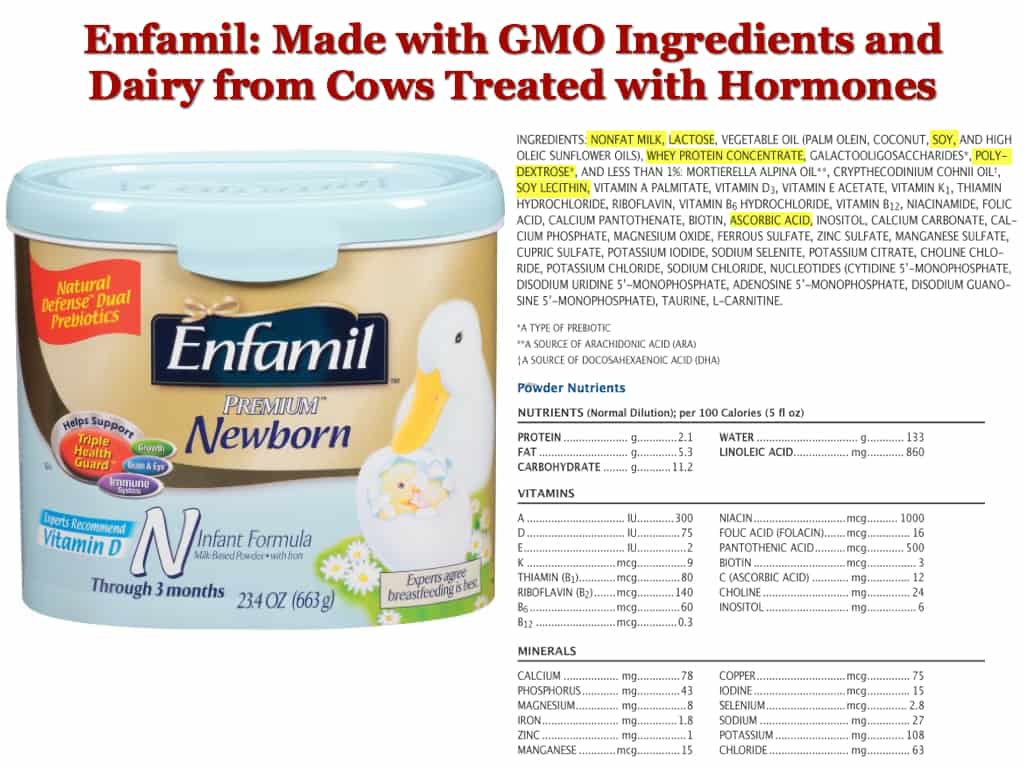 Ideally, your baby should be fed on demand when he is hungry. If you're breastfeeding, on-demand feeding is a good way to keep your milk supply going as your body will naturally respond to your baby's needs and continue to produce the required amount of milk. Bottle-feeding on demand can also be beneficial for your baby, as it allows him to self-regulate his feeding needs.
Ideally, your baby should be fed on demand when he is hungry. If you're breastfeeding, on-demand feeding is a good way to keep your milk supply going as your body will naturally respond to your baby's needs and continue to produce the required amount of milk. Bottle-feeding on demand can also be beneficial for your baby, as it allows him to self-regulate his feeding needs.
How much breast milk should a newborn drink?
So, how much should a newborn baby eat? A remarkable feature of each child is its uniqueness, so it would be wrong to feed the baby strictly according to the instructions. Don't panic if the recommendations below don't fit your own feeding schedule, but please contact your healthcare provider or pediatrician if you have any questions.
Although every baby is different, newborns typically eat every two to three hours, for a total of 8 to 12 meals a day.
How many milliliters does a newborn baby drink? At the very beginning, your body will only produce a small amount of yellowish and thick breast milk called colostrum. This milk is an ideal source of nutrients that your newborn needs, in addition, it has many immunological components. 1
This milk is an ideal source of nutrients that your newborn needs, in addition, it has many immunological components. 1
How much milk does a newborn baby drink? Infants drink 30-60 ml per feeding, while this volume increases to 60-90 ml by two weeks of age. So don't worry if you don't feel like your body is producing much milk in those first few days after your baby is born! Feeding times will also vary, ranging from 10 to 30 minutes at the very beginning and then gradually increasing as your baby grows.
How much breastmilk the baby takes if bottle feeding
If you choose to bottle feed your baby from time to time, do so at the same intervals and for the same period of time as if you were breastfeeding. Pumping is a great option for breastfeeding your baby. It will allow you to separate from the baby if necessary and at the same time retain all the benefits of breastfeeding.
It's also important to get a bottle that helps make bottle feeding more natural for both you and your baby. For example, take a look at this Philips Natural bottle. Its wide, physiologically shaped nipple promotes a natural latch that is identical to that of a mother's breast, making it easier to alternate between bottle and breastfeeding.
For example, take a look at this Philips Natural bottle. Its wide, physiologically shaped nipple promotes a natural latch that is identical to that of a mother's breast, making it easier to alternate between bottle and breastfeeding.
Philips Avent
Natural Baby Bottle
SCF033/27General score /5
- Reviews reviews reviews
-{Discount -Value}
How to understand that the child is already full? When breastfeeding or bottle feeding, look out for the following signs that may indicate that your newborn baby is full:
- baby closes his mouth;
- turns head away from bottle or breast;
- handles are not clenched and relaxed;
- falls asleep quickly.
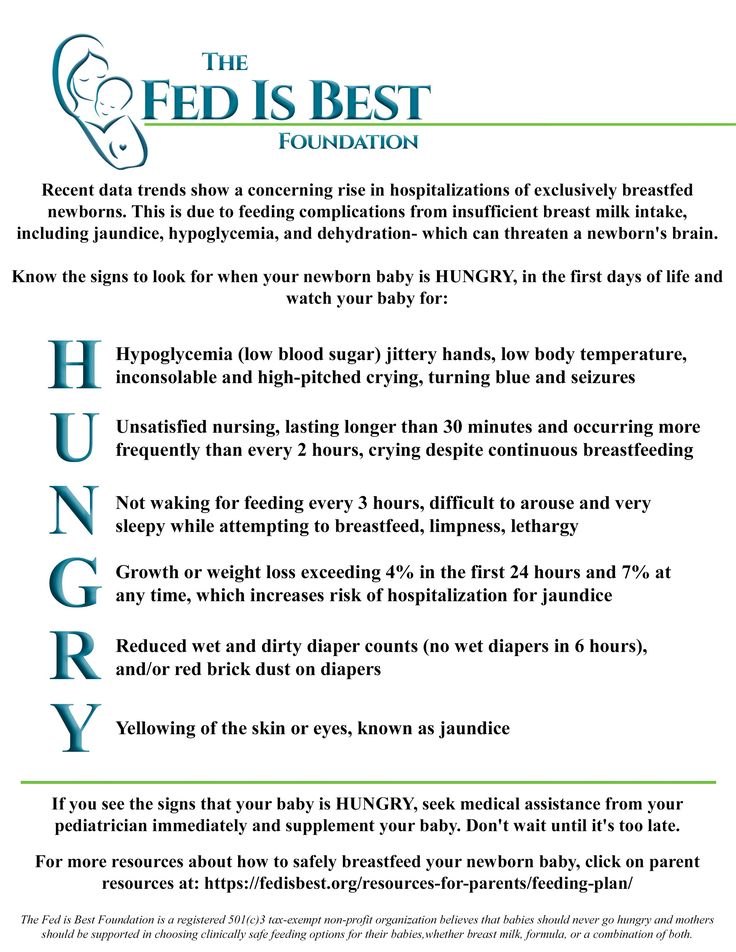
If the baby shows signs of fullness, stop breastfeeding or bottle feeding, even if the bottle is not yet empty. 2
The right choice for you and your baby
Remember that every child is different and no one is as close to you as you are. Choose the feeding option that works best for you and your newborn, whether breastfeeding, bottle feeding, or a combination.
I understand
You are about to visit a Philips global content page
Continue
You are about to visit the Philips USA website.
I understand
How much formula should be given to a child depending on age,
- Polina Alexandrovna, when might a baby need powdered milk formula?
- There are several situations when a mother is physically unable to breastfeed her baby and switches to artificial or mixed feeding (covers the baby's nutritional needs partly from breast milk, partly from formula):
- Contraindications to breastfeeding by mother and / or child.

- Lack of milk is true hypogalactia.
- Psychological reasons why a mother is not ready to breastfeed.
- The child needs a special medical formula.
- What determines the amount of formula that a child eats, and how to calculate how much formula a child needs?
- Often mothers think that the amount of formula depends only on age, but the weight of the child is also an important factor . Each age has its own formulas for calculating the mixture for one meal.
Important! The weight of children of the same age, especially the first months of life, can be radically different. Accordingly, the volume of the milk mixture for them will be different.
On mixed feeding, the total amount of milk nutrition per day that the child should consume depends on the amount of breast milk. The main part of the mother gives breast milk, and the amount that is not enough for the daily norm, replenishes, feeding the mixture.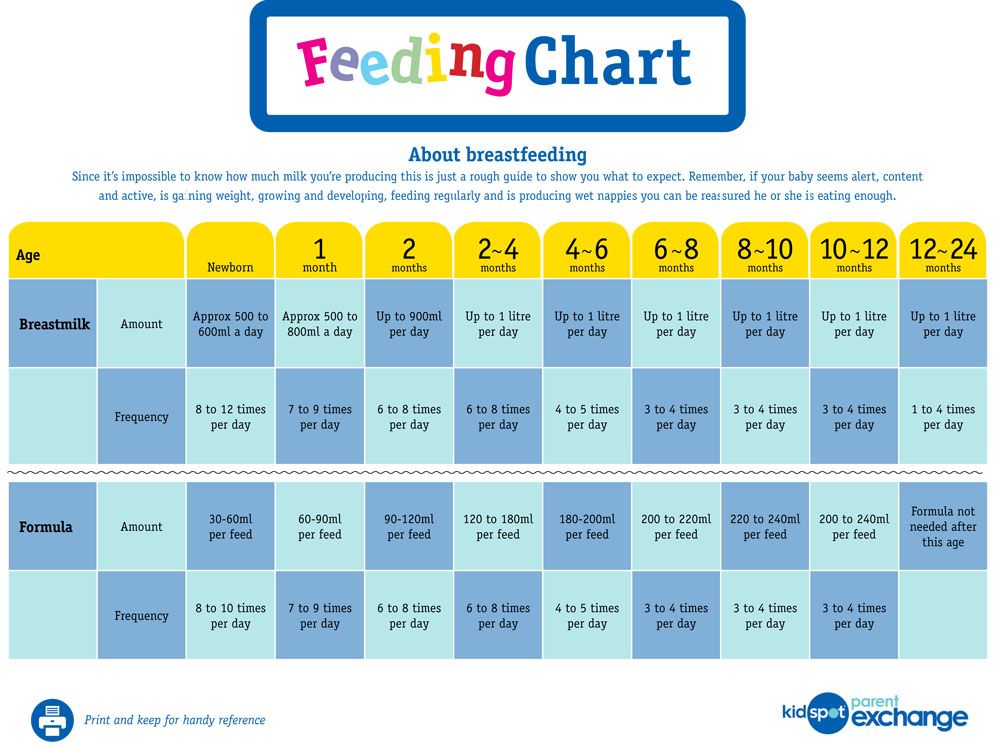
- Let's talk about how much formula a child needs and what a baby can do at different periods of development. Let's start from the first days of the baby: how much formula should a newborn baby receive?
- The stomach of a newborn holds about 10 ml per feeding. With each subsequent day, the volume of the stomach and nutrition increases by 10 ml, that is, on the second day of life it is 20 ml, on the third - 30 ml, by the seventh day - 70 ml. Formula-fed baby receives power at intervals of three hours.
The volume of the mixture on artificial feeding up to 1 month:
- the amount of food per day is 500-700 ml,
- the number of feedings in one day is 8-10.
Read also
- how to calculate the nutrition of a newborn
HOW MUCH FORMULA SHOULD BE GIVED IN 1 MONTH
- By one month, the child has a feeding regimen. By this age, the baby begins to open his eyes more often and fix his eyes on his mother, especially at the time of feeding (the distance at which the baby can focus his eyes is 20 cm, this is the distance from the mother’s chest to her eyes). Some babies gradually learn to hold their heads: it doesn’t work out completely, but they are already trying.
By this age, the baby begins to open his eyes more often and fix his eyes on his mother, especially at the time of feeding (the distance at which the baby can focus his eyes is 20 cm, this is the distance from the mother’s chest to her eyes). Some babies gradually learn to hold their heads: it doesn’t work out completely, but they are already trying.
The volume of the mixture on artificial feeding from 1 to 2 months:
- food volume per day - 600-900 ml,
- the number of feedings in one day is 7-8.
HOW MUCH FORMULA DOES A 3 MONTH BABY NEED
- The baby continues to grow and gain weight. He raises his head more confidently. She can smile at her mother and start laughing closer to four months.
Volume formula formula fed 3 to 4 months:
- food volume per day - 750-950 ml,
- the number of feedings in one day is 6-7.
HOW MUCH FORMULA DOES A 4 MONTH BABY NEED
- The baby recognizes his mother very well. At this age, a “complex of revival” appears - when mom or dad, a close relative, comes into the room, the baby comes to life (begins to walk, move arms and legs). In physical development, this is the period of the first attempts to roll over, and some babies begin to roll over from their tummy to their back.
At this age, a “complex of revival” appears - when mom or dad, a close relative, comes into the room, the baby comes to life (begins to walk, move arms and legs). In physical development, this is the period of the first attempts to roll over, and some babies begin to roll over from their tummy to their back.
Volume formula formula fed 4 to 5 months:
- the amount of food per day - 850-1000 ml,
- the number of feedings in one day is 5-6.
HOW MUCH FORMULA DOES A 5 MONTHS BABY NEED
- The baby recognizes his mother very well. At this age, a “complex of revival” appears - when mom or dad, a close relative, comes into the room, the baby comes to life (begins to walk, move arms and legs). In physical development, this is the period of the first attempts to roll over, and some babies begin to roll over from their tummy to their back.
Volume formula formula fed 5 to 6 months:
- the amount of food per day - 850-1000 ml,
- the number of feedings in one day is 5-6.

RECOMMENDED AMOUNT OF BREAST-MILK SUBSTITUTE FOR FORMULATION FEEDING
HOW MUCH FORMULA DOES A 6 MONTHS BABY NEED
- Some babies can crawl or are just learning to do so. Others follow a different scenario and learn to sit - they begin to sit down and hold in this position. Usually a child does one thing: either learns to sit and then begins to crawl, or begins to crawl and from this position begins to sit.
HOW MUCH FORMULA DOES A 6-12 MONTHS BABY NEED
- The baby becomes more mobile and can move wherever he wants. Begins to be interested in subjects that were previously inaccessible to him. Gradually preparing for walking - learned to crawl, began to get on his knees and then fully on his legs, move, holding the handles on the supports, then walk by one handle. At about 12 months, the baby takes its first steps.
HOW MUCH FORMULA DOES A 12 MONTH BABY NEED
— The kid is mature enough and independent. There is an active development of walking, speech. The child becomes a smaller copy of an adult with his own desires and needs.
There is an active development of walking, speech. The child becomes a smaller copy of an adult with his own desires and needs.
After 6 months, children receive complementary foods, and this happens differently for different babies, so it is not possible to specify the total amount of food for all. At this age, everything is calculated individually, and the amount of supplementary feeding with a mixture depends on the amount of complementary foods , which the child receives.
- How to work out the optimal frequency of feeding?
- It is advisable to focus on the indicators of the table. For example, on the packaging of each formula of the MAMAKO ® Premium mixture, there is a feeding table that is averagely suitable for babies of different ages. If the child eats little and often, then this can become a problem at the stage of complementary feeding (the child gets used to eating every hour, but he will not be given complementary foods on demand). By the time complementary foods are introduced, it is desirable that the child has established 5 meals a day (maximum 6 meals a day), not counting night feedings.
By the time complementary foods are introduced, it is desirable that the child has established 5 meals a day (maximum 6 meals a day), not counting night feedings.
How to determine how much formula your baby needs
- Polina Alexandrovna, is it worth focusing on the behavior of the child and considering that his body "knows how best", or should we try to do everything clearly according to the standards?
“Parents need to follow the rules. If you know the norm of the amount of food, you can assess how much the child, following his desires, consumes this norm - whether he has enough, whether he eats less or asks for food in excess. If you focus only on the wishes of the child, you will not be able to assess how normal the situation is.
Usually, if the baby does not eat enough food, he does not gain weight and is slightly behind in development. Nothing good comes out of this, just like if a child goes over the norm. We must try to stay within the norm. However, sometimes it is permissible to deviate from the rules for a short time (the baby is sick and has a poor appetite).
However, sometimes it is permissible to deviate from the rules for a short time (the baby is sick and has a poor appetite).
- How to understand that the child has enough formula and does not need to try to supplement?
- According to the signs that are noticeable to the mother or that can be assessed:
- behavior - the child is calm, active, in a good mood - he is unlikely to be malnourished;
- appearance — the child gains weight well or, conversely, began to look thinner;
- weighing - if the child gains weight and height within the normal range, we can say that the food is sufficient
See also
- what to do if the baby is not gaining weight well
— How does underfeeding manifest itself?
- Underfeeding is primarily manifested by the behavior of the child - he becomes whiny, irritable, can be constantly excited. Outwardly, it is noticeable that the child is not gaining weight well or has lost weight.
Outwardly, it is noticeable that the child is not gaining weight well or has lost weight.
Important! The child is constantly lethargic and sleepy, there are long breaks between feedings - this may indicate extreme underfeeding and is a reason to see a doctor.
— How does overfeeding manifest itself?
- If overfeeding is one-time, then most often the child spits up an excessive amount of formula milk or breast milk. If a child is regularly fed more than normal, then the main indicator of overfeeding will be excessive weight gain - growth will continue to increase evenly, but the weight will not correspond to growth.
— Polina Alexandrovna, is it possible to distinguish a child's anxiety from hunger from other problems?
- It is necessary to objectively assess at what time the child is worried.
- If a child is anxious after 2.5 hours after feeding, then it can be assumed that he cannot stand the three-hour interval between feedings and is hungry before the due date.
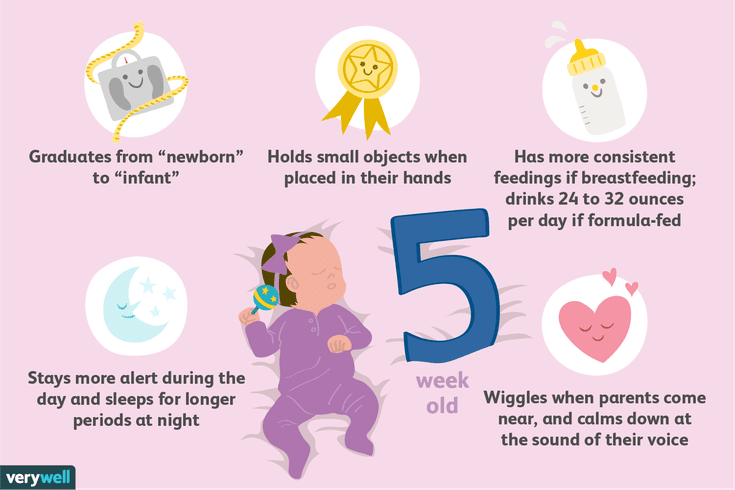
- If the child is worried 15-20 minutes after feeding, then most likely the reason is not hunger. Wet diaper, wants to sleep, high body temperature, environmental conditions become uncomfortable, tired of lying on one side and wants to roll over - you always need to evaluate the situation objectively.
Advice to mom: at the first worry of the child, you should not assume that he is hungry and try to feed him. The reasons for concern can be varied.
MAMAKO ® 1 Premium with 2'-FL human milk oligosaccharides is an important step in the evolution of baby nutrition.
- How to supplement if the child does not eat his norm for feeding?
- First you need to determine whether the norm is adequate for the age and weight of the child. Mothers think that a child needs one amount of food, but according to his weight, it may be less. If the child is undernourished and there is insufficient weight gain and growth, then it makes sense to supplement him during sleep, add night feedings.
Mothers think that a child needs one amount of food, but according to his weight, it may be less. If the child is undernourished and there is insufficient weight gain and growth, then it makes sense to supplement him during sleep, add night feedings.
Feeding around dreams is feeding during sleep, when the baby is not awake and cannot stop eating.
— What to do if the child has eaten his norm and continues to ask for food?
- A child who has eaten his norm and is worried, most likely, is not so acutely hungry that he should be supplemented. Try to distract the baby, switch his attention and see how he behaves further. At the same time, you need to be sure of the relevance of the nutritional norm calculated for the child, and always check it for compliance with the age and weight of the baby.
At each age, each child has his own rate of consumption of milk formula. How many milliliters of the mixture a child should eat, the doctor calculates, taking into account the age and weight of your baby.





